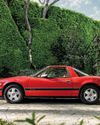A subtle yet unrestrained reimaging of Rolls-Royce's Flagship model.

STANDING IN A dark photo studio in downtown Los Angeles, we suddenly hear a voice. Her tone soft, seductive, and slightly eerie, a woman whispers the words on her script, purple prose written by Rolls-Royce to boast about its rose-colored past and the idyllic future it imagines. She ends with, “Today, we become tomorrow.” Overhead lights brighten, and a two-tone Rolls-Royce Phantom comes into view.
A thoughtful redesign of the marque’s flagship model, it’s not immediately apparent that this eighth-generation Phantom is a platformup project. It doesn’t look dramatically different from today’s Phantom, stale after 14 years on the market. Probably because Rolls-Royce engineers and designers were faced with this conundrum: modernize Rolls-Royce’s longest-running nameplate while retaining the model’s classic elegance.
Rolls-Royce calls the Phantom “the conveyance of choice for the world’s most influential and powerful men and women … a sentinel silently witnessing moments as significant as The Beatles collecting their honors at Buckingham Palace, Field Marshal Montgomery driving Churchill and Eisenhower, and numerous global superstars collecting their Oscars.” After creating the first-generation Phantom in 1925, the British manufacturer continued recapturing what it considers the model’s hallmark characteristics—comfort, effortlessness, opulence— for seven generations.
This story is from the September/October 2017 edition of Automobile.
Start your 7-day Magzter GOLD free trial to access thousands of curated premium stories, and 8,500+ magazines and newspapers.
Already a subscriber ? Sign In
This story is from the September/October 2017 edition of Automobile.
Start your 7-day Magzter GOLD free trial to access thousands of curated premium stories, and 8,500+ magazines and newspapers.
Already a subscriber? Sign In

Bradley Price Watches Over Cars
I don't wear a watch, and I think I know why: a permanent injury.

The Real Fate Of The Furious
PaulWalker left behind a treasure trove of collector cars

Kia - Stinger A Year With South Korea's Star Sedan
Perfectly balanced, as all things should be

Reality Bytes
HOW CLOSE IS A PROFESSIONAL RACING SIMULATOR TO THE REAL THING? WE SENT OUR PRO DRIVER TO FORD’S PERFORMANCE TECHNICAL CENTER TO FIND OUT

There Goes Your Hero
Ford’s new-Mustang Shelby GT500 can save the day regardless of what kind of mood you're in

FOUR SEASONS INTRO -N MARKS THE SPOT
Our year with Hyundai’s hottest hatch is off to a blistering, blissful start

1988-91 Buick Reatta
THE BUICK REATTA was first conjured in the early 1980s in response to a perceived gap in the marque’s lineup.

THE FULL PACKAGE
The world needs Teslas,but it wants the Taycan

Wall Art
All these years later, the Lamborghini Countach is still the stuff of dreams.

MAGICAL MINI TOUR
A ROCKING JOURNEY THROUGH ’60S LONDON IN A VINTAGE VERSION OF THE QUINTESSENTIAL 60-YEAR-OLD BRITISH CITY CAR